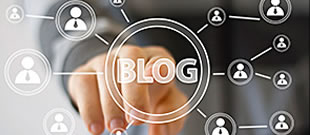Telemedicine and Life and Death
Telemedicine and Life and Death
There is (virtually) no aspect of life which cannot be positively impacted by the addition of telemedicine.
Telemedicine for Pediatric Care
In May 2001 Dr. Ken McConnochie began delivering Telemedicine care to five inner-city Rochester child care sites and today virtual care is available in all Rochester City Schools. (see brief video here: https://www.youtube.com/embed/UjjV0SfdSlA )
Telemedicine for Elder Care
There has been a recent focus on using telemedicine to support elder care. There will be a special area at the upcoming American Telemedicine Association annual meeting in Orlando in May devoted to Elder Care. (Register here http://www.ata2017.org/ or contact hreis@healthepractices.com for a free exhibit hall pass.) Keep tuned for a major announcement coming soon about a major telehealth initiative with one of the largest Nursing Homes in NYC coordinated by www.thecastletongroup.com.
There have also been interesting developments in telemedicine at the “End of Life”. ResolutionCare works with healthcare providers and payers to provide Palliative care to people where they live and on their own terms. Dr. Michael Fratkin, founder of ResolutionCare, has developed a program including teams comprised of physicians, nurses, social workers, clergy, and support staff focusing on bringing greater quality of living and greater quality of dying using telehealth technologies. See http://www.resolutioncare.com/
Two Telemedicine Pioneers

Dr. Ron Pion is a physician (Ob/Gyn), visionary, and business professional. Among many other major accomplishments, Dr. Pion founded the Hospital Satellite Network, the nation’s first daily satellite-delivered television service providing programming for hospital-based health professionals and patients. I am privileged to call Dr. Pion a friend and a partner and recently had the opportunity to discuss how telemedicine will impact “end of life”. According to Dr. Pion, “I want to celebrate life rather than worry about death.” He also wants to reinvigorate the conversation about death and feels that it is important to talk about death with children at an early age, not just when there is a teachable moment like the death of a family member or close acquaintance. “We know that everyone is going to die.” Dr. Pion suggests a focus on prevention rather than just treating acute illness which has been the focus of other telemedicine initiatives.
Dr. Pion also pointed me to a wonderful article about Ideo’s attempt to redesign death in America. Anyone with an interest in this topic will appreciate reading the full article here:
https://www.californiasunday.com/issues/2015-04-05/

Dr. Lisa Thompson created http://www.e-palliativecare.com/ in order to provide patients, families and caregivers with resources to empower them to have the best possible quality of life while living with serious illness. Her dream is to make high quality palliative care accessible to everyone. For the past four years, Dr. Thompson has been providing online medical consultations to patients via telemedicine.
Can telemedicine save a life?
There are plenty of examples of live-saving telemedicine ranging from rapid support of stroke patients in rural areas, to transmission of vital signs from an ambulance to a hospital, to the use of home-monitoring devices to transmit daily weight, blood pressure, and other biometrics to their doctors for patients suffering from COPD, diabetes and other chronic conditions (see www.myhealthconnection.tv). With just a click of a button, a doctor may conference in with a patient and provide rapid triage and medical decision-making that can save hours in a world where minutes make all the difference.
Can telemedicine save the healthcare system? With the promise of lower costs, better patient care and improved patient satisfaction it goes a long way to helping achieve the triple aim of healthcare.



